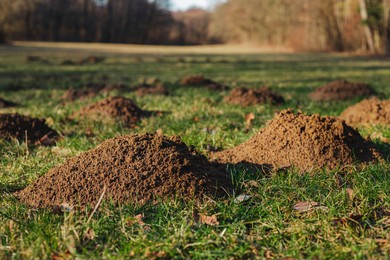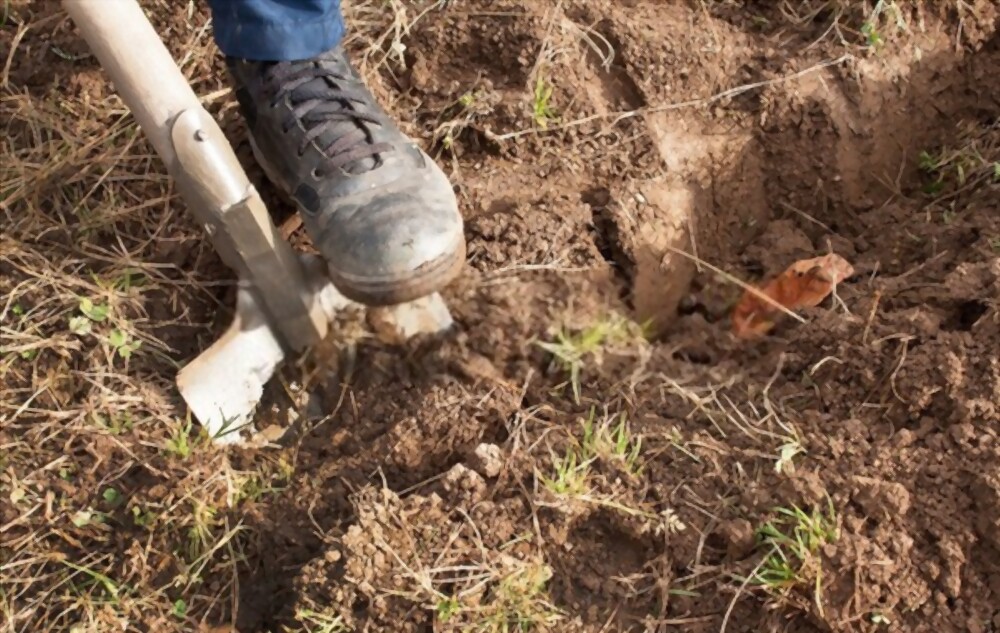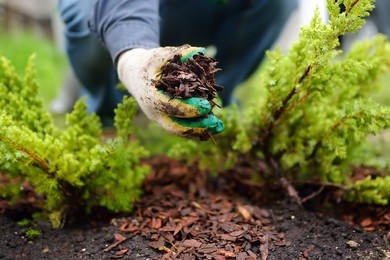When it comes to any construction or landscaping project, knowing how much materials weigh is crucial in determining just how much of it you need. And of all the materials you need to factor in, dirt is at the forefront! But how much does a yard of dirt actually weigh? Is it a matter of just guessing and hoping for the best, or is there a precise formula for calculating the weight of dirt?
There are two main factors that determine the weight of a cubic yard of dirt: moisture content and compaction level. Dry dirt usually weighs between 1 and 1.3 tons per cubic yard, while wet and compacted dirt weighs as much as 1.7 tons per cubic yard.
I can assist you in calculating the amount of dirt required for your upcoming construction project. This can be done using weight and volume measurements. Let’s begin!
How Much Does a Yard of Dirt Weigh?
Dirt can be made up of different things like dead soil, rocks, sand, and silt, which affects how much it weighs. If the dirt is dry, it usually weighs between 1 and 1.3 tons per yard. But if it’s moist, it can weigh about 1.7 tons per yard.
That’s because moisture adds to its volume and weight. So, when you order dirt for your project, you need to know how much you need and whether it will be dry or moist, so you can get the right amount.
Related: How Many Yards Does a Concrete Truck Hold?
Factors that Affect the Weight of a Yard of Dirt

Soil is a naturally occurring mixture of minerals, organic matter, gases, liquids, and other materials that support plant life. It is an essential component of the earth’s ecosystem and provides the foundation for many human activities such as agriculture, construction, and mining.
The weight of soil, or dirt, can vary depending on several different factors, including soil type, moisture content, organic matter, and compaction. Here is a closer look at each of these factors and how they can affect the weight of a yard of dirt.
Soil Type:
There are several different types of soil, including clay, sand, silt, and loam. Each type of soil has a different weight, with clay being the heaviest and sand being the lightest. This is because clay particles are smaller and denser than sand particles, making them heavier. So, if you have a yard of clay soil, it will weigh more than a yard of sand soil.
Moisture Content:
The amount of moisture in the soil also affects its weight. Wet soil is heavier than dry soil because water adds to the weight. However, the amount of moisture in the soil can also affect its density. For example, if the soil is too wet and has a high water content, it can become compacted, which can make it denser and heavier. Conversely, if the soil is too dry, it can become loose and airy, resulting in a lighter weight.
Organic Matter:
The amount of organic matter in the soil, such as decomposing plant material, can also impact its weight. Organic matter can increase the soil’s water-holding capacity, making it heavier when wet. However, it can also improve soil structure and prevent soil from becoming compacted, which can result in a lighter weight.
Compaction:
Compaction is the process of reducing the volume of soil by removing air spaces between the soil particles. Compacted soil is denser and heavier than loose soil, which can increase its weight. Soil can become compacted over time due to heavy foot traffic, machinery, or vehicle traffic. Compacted soil is often more difficult to work with and can negatively impact plant growth.
Examples:
To illustrate how variations in these factors can impact the weight of a yard of dirt, here are a few examples:
- A yard of wet clay soil with a high organic matter content will weigh more than a yard of dry sandy soil with little organic matter.
- A yard of loose, dry soil that has not been compacted will weigh less than a yard of tightly compressed, wet soil.
- A yard of soil with a high water content that has been excessively compacted will weigh more than a yard of lightly compacted soil with a moderate moisture content.
How to Calculate the Weight of a Yard of Dirt?

Measuring and weighing soil is an important task when working in construction, landscaping, or gardening. It helps to determine the quantity of soil needed for a particular project and helps in budget planning.
Here are step-by-step instructions for measuring and weighing a yard of dirt:
1. Measure the area: Measure the length and width of the area where you wish to spread the soil. Multiply the length times the width to determine the square footage of your area.
2. Determine the Depth: Decide on the desired depth of soil you wish to add to the area. For example, if you want to add soil to a garden bed that is 10 feet by 10 feet and want it to be 3 inches high, convert 3 inches to feet (0.25 feet) and multiply by the square footage of the area (100 square feet). The result is 25 cubic feet.
3. Convert Cubic Feet to Cubic Yards: Soil is generally sold by the cubic yard, so it’s important to convert the cubic feet measurement to cubic yards. There are 27 cubic feet in one cubic yard, so take the cubic feet measurement and divide it by 27. In our example, 25 divided by 27 is approximately 0.93 cubic yards.
4. Weigh the Soil: Once you have determined the cubic yards of the soil required, it needs to be weighed. Typically, a cubic yard of soil weighs between 2,000 and 2,700 pounds, depending on the type of soil. You can check with a supplier or use an online calculator to determine the weight.
Common errors that can occur during the measurement process
Common errors that can occur during the measurement process include forgetting to measure the depth of soil required, measuring the area incorrectly, and not converting cubic feet to cubic yards. It’s important to double-check all measurements and calculations to avoid making costly mistakes.
Related: How Many Bags Of Mulch In A Yard?
Common Projects Involving Soil and How Much Dirt You Need

Landscaping and gardening projects often require soil to provide a healthy environment for plants to grow. Here are some common projects that involve soil:
- Creating a new garden bed: When starting a new garden bed, you’ll need to add topsoil to the existing soil to create a nutrient-rich growing environment for plants.
- Filling raised beds: Raised garden beds require a significant amount of soil to create a deep growing environment. The amount of soil needed will depend on the size of the bed and the desired depth.
- Adding soil to existing gardens: Over time, soil can compact and lose nutrients, making it necessary to add fresh soil to existing gardens.
- Leveling uneven ground: If your yard has uneven terrain, adding soil to low spots can help level it out.
To estimate how much soil you’ll need, you first need to calculate the area to be covered. For example, if you’re planning to create a new garden bed that is 4 feet wide by 8 feet long, the area to be covered would be 32 square feet.
Next, determine the desired depth of the soil. Generally, a depth of 6-12 inches is recommended for most gardening projects. Let’s say you want to add 6 inches of topsoil to your 4’x8′ garden bed. To calculate the amount of soil you’ll need, you would multiply the area (32 square feet) by the depth (0.5 feet or 6 inches):
32 sq. ft. x 0.5 ft. = 16 cubic feet
So, you would need approximately 16 cubic feet of soil to cover the garden bed to the desired depth.
If you plan to purchase soil in bulk, there are a few things to consider. First, find out if there are any delivery fees associated with your purchase. Some suppliers may offer free delivery if you order a certain amount of soil.
FAQs
How many kg is a yard of dirt?
It is not possible to convert a volume unit (yard) to a mass unit (kg) without knowing the density of the dirt.
How much do 2 yards of dirt weigh?
It depends on the density of the dirt. Without that information, it is impossible to determine the weight.
What is 1 yard of dirt?
One yard of dirt is a unit of volume and is equal to 27 cubic feet or approximately 0.7646 cubic meters.
How many yards is 1 ton of dirt?
The number of yards in a ton of dirt depends on the density of the dirt. For example, if the dirt has a density of 1.2 tons per cubic yard, then one yard of dirt would weigh 1.2 tons and 0.83 yards (or approximately 2.5 feet) would equal one ton of dirt.